In the competitive compact SUV market, the Audi Q3 and Opel Grandland stand out with their unique features and engineering prowess. This comparison delves into the technical aspects, innovations, and overall driving experience of both vehicles, catering to diverse consumer preferences.
Audi Q3 vs Vauxhall Grandland – Performance, range & efficiency compared
Design and Dimensions
Both the Audi Q3 and Opel Grandland exhibit a modern and dynamic design. The Q3 measures 4484 mm in length, 1849 mm in width, and 1585 mm in height, giving it a sturdy stature typical of Audi's design language. In contrast, the Opel Grandland is slightly larger at 4650 mm in length and wider at 1934 mm, with a taller height of 1665 mm, providing a robust and aggressive appearance.
Powertrains and Performance
The Audi Q3 offers a versatile range of powertrains, including petrol and diesel options with power outputs ranging from 150 HP to a muscular 245 HP. The acceleration from 0-100 km/h ranges impressively from 5.8 to 9.5 seconds, depending on the engine variant. The Q3 features both front-wheel drive and all-wheel drive configurations, providing options to suit various driving conditions.
On the other hand, the Opel Grandland embraces modern hybrid technology, offering petrol MHEV, plugin hybrid, and electric variants. The power output ranges from 136 HP in the base model up to 213 HP, with zero to 100 km/h times ranging from 7.8 seconds to 10.2 seconds. The Grandland's focus on fuel efficiency is evident, with impressive consumption figures of 0.8 L/100 km for electric versions, and its electric range can reach up to 585 km.
Fuel Efficiency and Emissions
When comparing fuel efficiency, the Audi Q3 achieves consumption figures between 5.5 and 8.5 L/100 km, depending on the engine choice. In terms of emissions, the Q3's CO2 efficiency class spans from E to G, with figures ranging from 143 to 192 g/km, highlighting its efficiency in various trims.
The Opel Grandland truly shines in this category, particularly with its electric variants boasting emissions as low as 0 g/km. With a CO2 efficiency class of A to D and emissions figures ranging from 19 to 124 g/km, it positions itself as a frontrunner in eco-friendliness, appealing to environmentally conscious drivers.
Interior and Technology Features
Inside, the Audi Q3 is known for its premium materials and cutting-edge infotainment system, featuring a sleek dashboard, a high-resolution display, and intuitive controls. It provides ample space for five passengers, along with a trunk capacity of 530 L, ensuring practicality without compromising comfort.
Meanwhile, the Opel Grandland boasts a roomy interior with a trunk capacity of 550 L. The Grandland integrates the latest technology, including advanced driver assistance systems and connectivity features designed to enhance safety and user experience, appealing to tech-savvy consumers.
Driving Experience and Handling
The driving experience of the Audi Q3 is amplified with its sophisticated suspension setup and precise steering, encouraging spirited driving while also maintaining comfort on long journeys. The Q3's all-wheel drive option further enhances stability and traction, making it an excellent choice for diverse road conditions.
The Opel Grandland, with its front-wheel-drive setup, provides a comfortable ride with a focus on ease of handling. The driving dynamics are more about soft and smooth experiences, making it ideal for city driving and daily commutes, while still offering decent performance on the highways.
Conclusion
In summary, the Audi Q3 and Opel Grandland cater to distinct consumer needs within the compact SUV segment. The Q3 impresses with its performance, luxury, and all-wheel drive capabilities, while the Grandland excels in innovative hybrid technology and practicality, appealing to a more eco-conscious audience. Ultimately, the choice between these two formidable contenders will depend on the buyer's priorities—whether they lean towards sporty performance or eco-friendly versatility.
Here’s where it gets real: The technical differences in detail
Costs and Efficiency:
Price and efficiency are key factors when choosing a car – and this is often where the real differences emerge.
Vauxhall Grandland has a slightly advantage in terms of price – it starts at 32600 £, while the Audi Q3 costs 38200 £. That’s a price difference of around 5666 £.
Fuel consumption also shows a difference: Audi Q3 manages with 1.70 L and is therefore significantly more efficient than the Vauxhall Grandland with 2.60 L. The difference is about 0.90 L per 100 km.
As for range, the Vauxhall Grandland performs significantly better – achieving up to 694 km, about 575 km more than the Audi Q3.
Engine and Performance:
Power, torque and acceleration are the classic benchmarks for car enthusiasts – and here, some clear differences start to show.
When it comes to engine power, the Vauxhall Grandland has a to a small extent edge – offering 325 HP compared to 272 HP. That’s roughly 53 HP more horsepower.
In acceleration from 0 to 100 km/h, the Audi Q3 is hardly perceptible quicker – completing the sprint in 5.70 s, while the Vauxhall Grandland takes 6.10 s. That’s about 0.40 s faster.
In terms of top speed, the Audi Q3 performs hardly perceptible better – reaching 240 km/h, while the Vauxhall Grandland tops out at 220 km/h. The difference is around 20 km/h.
There’s also a difference in torque: Vauxhall Grandland pulls distinct stronger with 509 Nm compared to 400 Nm. That’s about 109 Nm difference.
Space and Everyday Use:
Cabin size, boot volume and payload all play a role in everyday practicality. Here, comfort and flexibility make the difference.
Both vehicles offer seating for 5 people.
In curb weight, Audi Q3 is slight lighter – 1635 kg compared to 1675 kg. The difference is around 40 kg.
In terms of boot space, the Vauxhall Grandland offers slightly more room – 550 L compared to 488 L. That’s a difference of about 62 L.
In maximum load capacity, the Vauxhall Grandland performs slightly better – up to 1645 L, which is about 259 L more than the Audi Q3.
When it comes to payload, Audi Q3 minimal takes the win – 535 kg compared to 495 kg. That’s a difference of about 40 kg.
Who wins the race?
The Vauxhall Grandland proves to be wins the duel decisively and therefore becomes our DriveDuel Champion!
Vauxhall Grandland is the better all-rounder in this comparison.
Costs and Consumption
View detailed analysis
Engine and Performance
View detailed analysis
Dimensions and Body
View detailed analysis
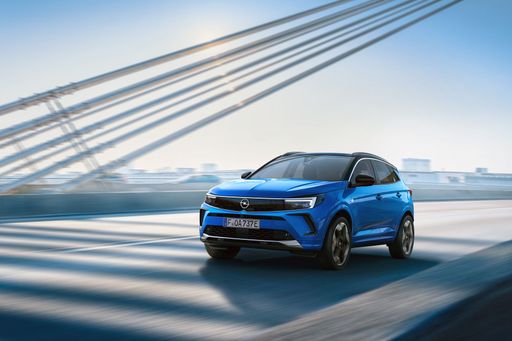 @ Opel / Stellantis Media
@ Opel / Stellantis Media
Vauxhall Grandland
Audi Q3
The Audi Q3 feels like a grown-up compact SUV with premium polish and city-friendly agility, the sort of car that makes weekend escapes and daily commutes equally satisfying. Inside, you get quality materials and smart packaging that keep things practical without skimping on style, so it’s an easy pick for buyers who want luxury without the drama.
details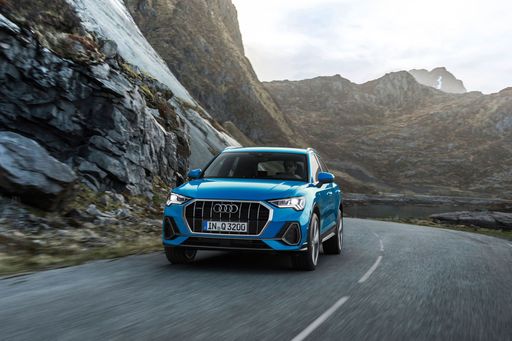 @ Audi AG
@ Audi AG
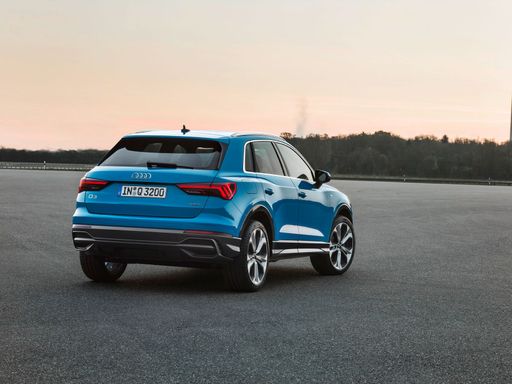 @ Audi AG
@ Audi AG
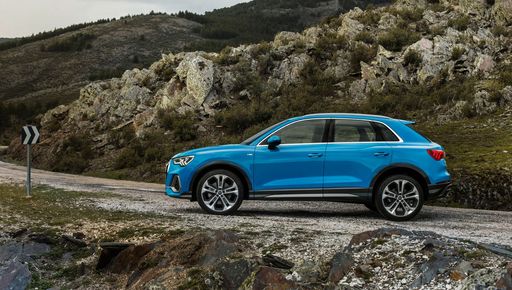 @ Audi AG
@ Audi AG
 @ Audi AG
@ Audi AG
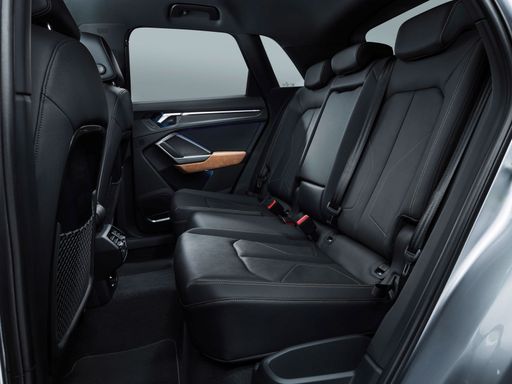 @ Audi AG
@ Audi AG
Vauxhall Grandland
The Opel Grandland feels like a sensible, well-rounded SUV — neat styling, a spacious cabin and a composed ride that turns daily driving into a quietly pleasant experience. It’s a smart choice for buyers who want modern tech, good economy and a dash of German practicality without shouting for attention.
details @ Opel / Stellantis Media
@ Opel / Stellantis Media
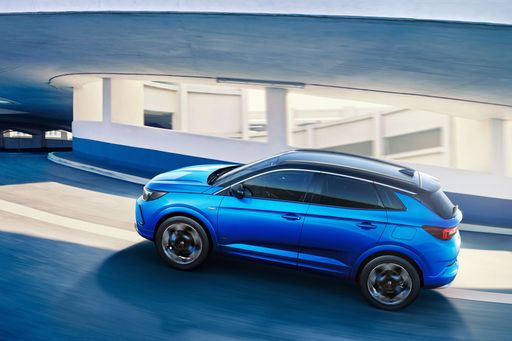 @ Opel / Stellantis Media
@ Opel / Stellantis Media
 @ Opel / Stellantis Media
@ Opel / Stellantis Media
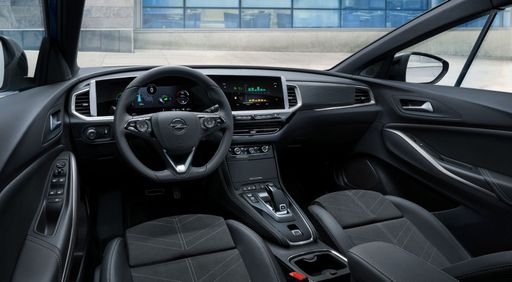 @ Opel / Stellantis Media
@ Opel / Stellantis Media
 @ Audi AG
@ Audi AG
|
 @ Opel / Stellantis Media
@ Opel / Stellantis Media
|
|
|
|
Costs and Consumption |
|
|---|---|
|
Price
38200 - 52900 £
|
Price
32600 - 51400 £
|
|
Consumption L/100km
1.7 - 8.6 L
|
Consumption L/100km
2.6 - 5.6 L
|
|
Consumption kWh/100km
-
|
Consumption kWh/100km
17.8 - 18.6 kWh
|
|
Electric Range
118 - 119 km
|
Electric Range
82 - 694 km
|
|
Battery Capacity
19.70 kWh
|
Battery Capacity
-
|
|
co2
39 - 195 g/km
|
co2
0 - 126 g/km
|
|
Fuel tank capacity
45 - 60 L
|
Fuel tank capacity
55 L
|
Dimensions and Body |
|
|---|---|
|
Body Type
SUV
|
Body Type
SUV
|
|
Seats
5
|
Seats
5
|
|
Doors
5
|
Doors
5
|
|
Curb weight
1635 - 1900 kg
|
Curb weight
1675 - 2325 kg
|
|
Trunk capacity
375 - 488 L
|
Trunk capacity
485 - 550 L
|
|
Length
4531 mm
|
Length
4650 mm
|
|
Width
1859 mm
|
Width
1905 - 1934 mm
|
|
Height
1559 - 1601 mm
|
Height
1665 mm
|
|
Max trunk capacity
1196 - 1386 L
|
Max trunk capacity
1580 - 1645 L
|
|
Payload
505 - 535 kg
|
Payload
425 - 495 kg
|
Engine and Performance |
|
|---|---|
|
Engine Type
Petrol MHEV, Petrol, Plugin Hybrid, Diesel
|
Engine Type
Electric, Petrol MHEV, Plugin Hybrid
|
|
Transmission
Automatic
|
Transmission
Automatic
|
|
Transmission Detail
Dual-Clutch Automatic
|
Transmission Detail
Reduction Gearbox, Dual-Clutch Automatic
|
|
Drive Type
Front-Wheel Drive, All-Wheel Drive
|
Drive Type
Front-Wheel Drive, All-Wheel Drive
|
|
Power HP
150 - 272 HP
|
Power HP
145 - 325 HP
|
|
Acceleration 0-100km/h
5.7 - 9.2 s
|
Acceleration 0-100km/h
6.1 - 10.2 s
|
|
Max Speed
208 - 240 km/h
|
Max Speed
170 - 220 km/h
|
|
Torque
250 - 400 Nm
|
Torque
230 - 509 Nm
|
|
Number of Cylinders
4
|
Number of Cylinders
3 - 4
|
|
Power kW
110 - 200 kW
|
Power kW
107 - 239 kW
|
|
Engine capacity
1498 - 1984 cm3
|
Engine capacity
1199 - 1598 cm3
|
General |
|
|---|---|
|
Model Year
2025
|
Model Year
2024 - 2025
|
|
CO2 Efficiency Class
E, G, B
|
CO2 Efficiency Class
A, D, B
|
|
Brand
Audi
|
Brand
Vauxhall
|
Is the Audi Q3 offered with different drivetrains?
The Audi Q3 is available as Front-Wheel Drive or All-Wheel Drive.
The prices and data displayed are estimates based on German list prices and may vary by country. This information is not legally binding.
